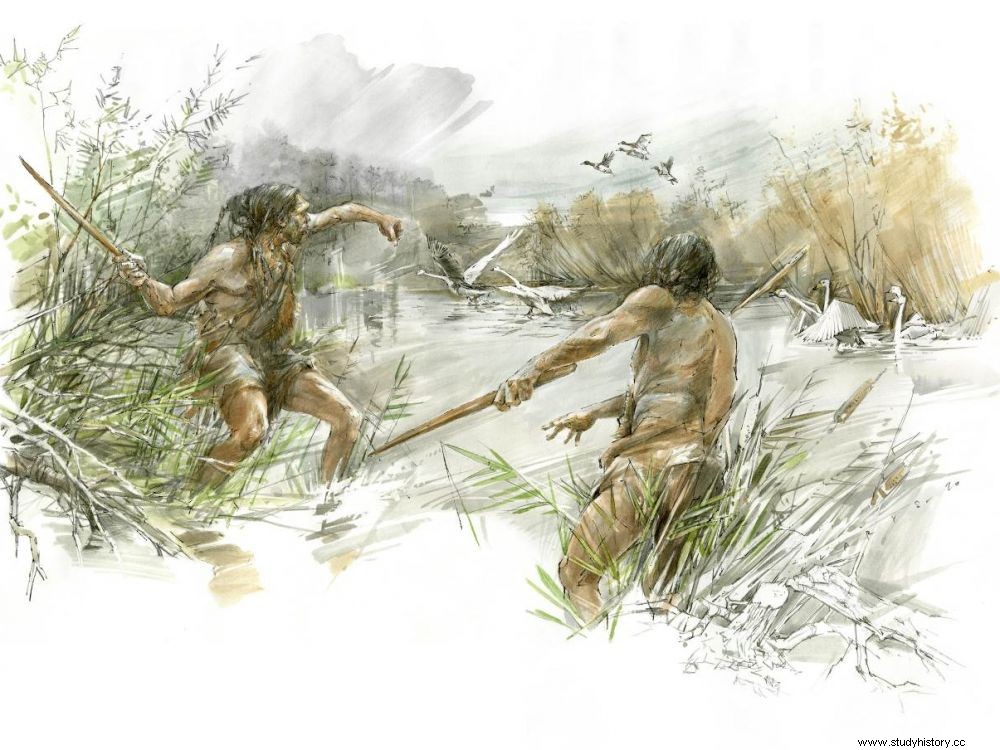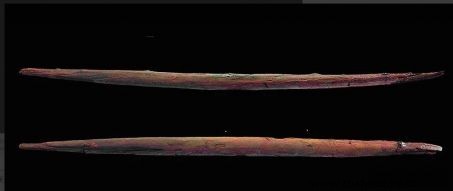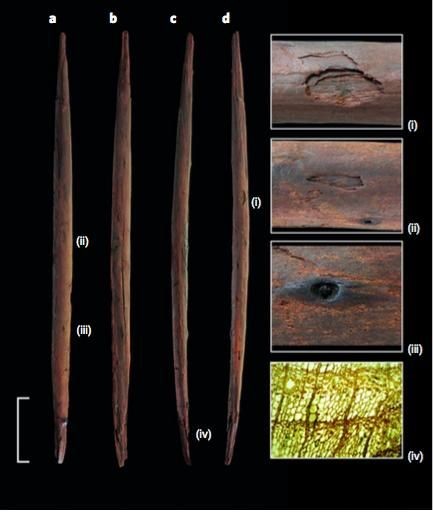Dating back to the Ice Age, a 300,000-year-old throwing stick has been discovered in Schöningen in northern Germany. It reveals how Homo heidelbergensis , a presumed ancestor of Neanderthals, used these weapons for hunting.

Hunters at Lake Schöningen using throwing sticks.
For a long time, the man had patiently removed the branches from the beautiful spruce stem, then shaped it with a shard of flint, before blunting both ends. His eyes riveted on the flock of ducks splashing about on the lake in the distance, he was jubilant about the waterfowl hunt that was about to begin... 300,000 years later, archaeologists found one of these "sticks of prehistoric jets, the oldest ever unearthed. It was preserved in the muddy sediments of an old open-pit lignite mine explored for 20 years at Schöningen in Lower Saxony (Germany).

Two views of the 300,000 year old throwing stick. Hunting weapon used by Homo heidelbergensis. ©Alexander Janas/University of Tubingen
The site is famous for the organic remains that have been preserved there in exceptional conditions. In particular wooden weapons, having undoubtedly belonged to the last Homo heidelbergensis, these presumed ancestors of Neanderthals who circulated in these northern regions of Europe between 700,000 and 300,000 years ago. The results of this research, led since 2011 by Nicholas Conard of the University of Tübingen (Germany), have just been published in the journal Nature Ecology &Evolution.
 The archaeological site of Schöningen. ©University of Schöningen
The archaeological site of Schöningen. ©University of Schöningen
In the Middle Pleistocene, small groups of hunters living in the regions north of present-day Germany used a whole arsenal of hunting weapons, including throwing sticks and spears. Eight of them, 1.80m to 2.50m long, were exhumed between 1994 and 1995 on this site in Schöningen. These hunting techniques have persisted through the millennia since around 125,000 years ago, a yew spear, associated this time with Neanderthal, was exhumed on the site of Lehringen (Germany). A 200,000-year-old spearhead has also been found in Clacton-on-Sea, Essex, Great Britain.

Four views of the throwing stick discovered in Schoningen and traces of impact. ©Veerle Rots / Gerlinge Bigga / University of Tübingen
The new 64.5 cm long spruce throwing stick discovered in 2016 shows many traces of use. "He has very clear impact marks in his mid-area ", explains Veerle Rots, archaeologist from the Tracéolab laboratory at the University of Liège (Belgium), involved in this work. Contacted by Sciences et Avenir, the prehistorian who studied them, believes that these characteristic marks are similar to those found on other throwing sticks with comparable morphology, still used by certain aboriginal populations of Australia and Tasmania, in Oceania.
"Paleolithic men used them mainly to hunt small game, waterfowl and rabbits. But we think they also used them for larger animals like horses , continues Veerle Rots. Bones of swans, ducks and equines have also been collected from the same archaeological levels as the throwing stick." Ethnographic records indicate that these weapons were held by the point when thrown:they would then spin around their center of gravity until they hit their target. Even if they were close to the boomerangs , throwing sticks were not intended to return to throwers. "These weapons were designed to move in a linear fashion" , adds Veerle Rots. And the distances covered can be dizzying. Depending on the skill of the hunter, prey between 30 meters and 100 meters away could be reached!
